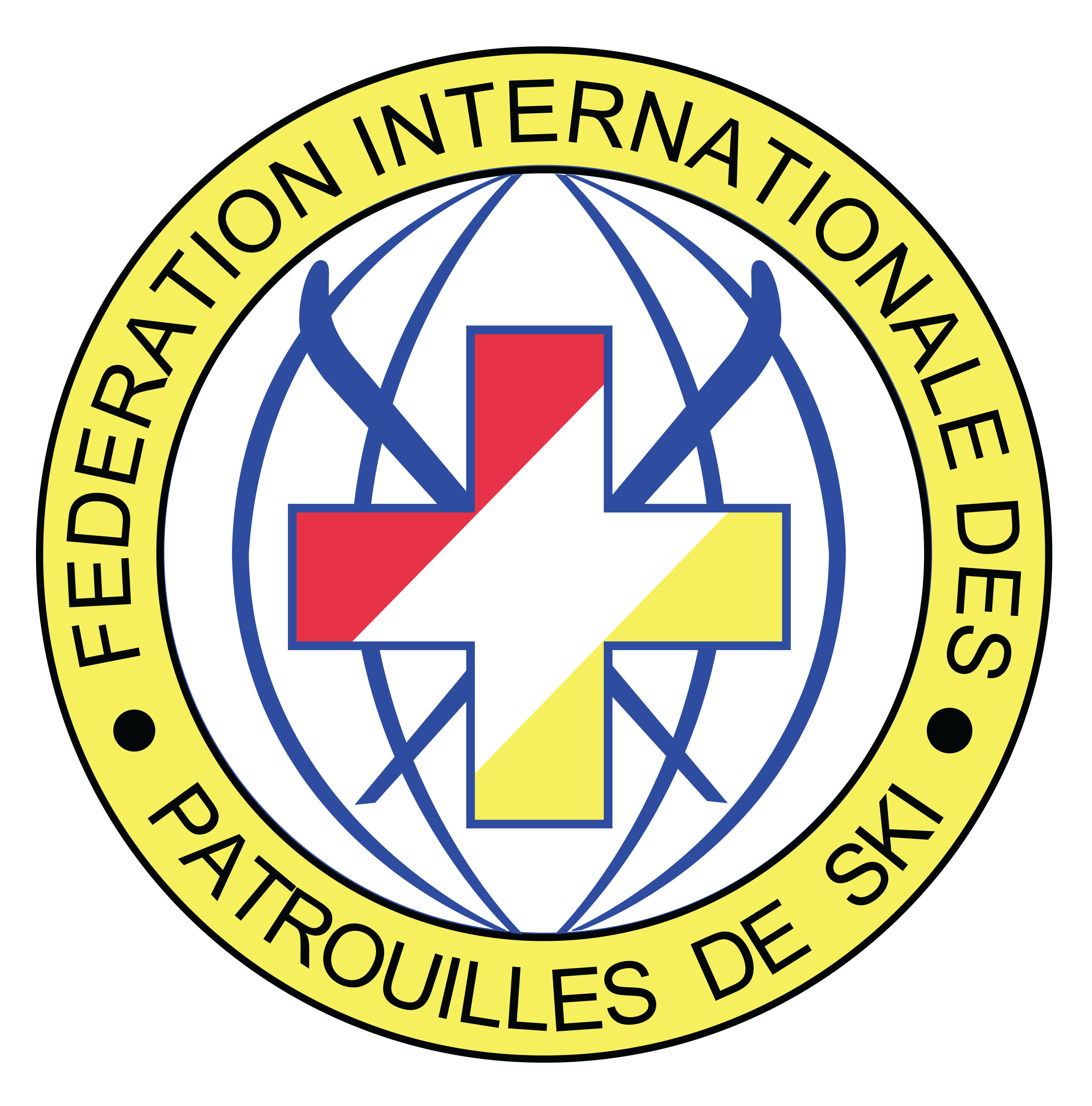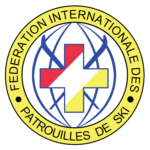La liste actuelle des membres nationaux est la suivante :
Argentine – Asociación Argentina de Instructores de Esquí, Snowboard y Pisteros Socorristas
Australie – Association australienne de patrouille de ski
Canada – Patrouille canadienne de ski
Chili – Patrullas de Ski du Chili
Finlande – Association finlandaise des domaines skiables
France – Association Nationale des Pisteurs Secouristes Professionnels
Islande – Skíðasvæðin
Italie – Federazione Italiana Sicurezza Piste Sci
Japon – Association japonaise de ski
Macédoine du Nord – Association macédonienne des sauveteurs des stations de ski
Norvège – Alpinanleggenes Landsforening
Roumanie – Asociatia Nationala a Salvatorilor Montani din Roumanie
Serbie – Service de secours en montagne Serbie
Corée du Sud – Système de patrouille de ski coréen
Suède – Organisation suédoise des zones de remontées mécaniques
Suisse – Seilbahnen Schweiz
Royaume-Uni – Association britannique des patrouilleurs de ski
États-Unis – Patrouille nationale de ski
Détails du membre actuel de la FIPS
Argentine.L’Asociación Argentina de Instructores de Esquí, Snowboard y Pisteros Socorristas (Aadides) est l’association de professionnels en Argentine qui regroupe les moniteurs de ski et de snowboard et, récemment, les patrouilles de ski. Elle est également responsable de la formation de ces professionnels, à travers l’E.A.S.P. (École Argentine des Patrouilles de Ski) étant en charge de tous les cours des Patrouilles de Ski, en maintenant les normes de qualité internationales.
Escuela Argentina de Seguridad de Pista (E.A.S.P) est une association civile à but non lucratif créée dans le but principal d’atteindre un niveau optimal d’enseignement en matière de sécurité dans l’ensemble du domaine skiable, homogène entre les différentes stations de ski d’Argentine.Notre mission est de former des professionnels pour agir dans toute situation liée à la sécurité dans les stations de ski, en promouvant le recyclage constant, le professionnalisme et la camaraderie.
Australie. L’Australian Ski Patrol Association (ASPA) est l’organisme australien de sécurité du ski composé de quelque 14 patrouilles de ski représentant un total de 550 patrouilleurs. Les patrouilles membres sont situées dans toutes les principales stations balnéaires des trois États dotés de zones alpines : la Nouvelle-Galles du Sud, Victoria et la Tasmanie.
Les patrouilles à ski se sont développées et existaient depuis plus de 20 ans lorsque l’ASPA a été créée en 1972 pour coordonner les activités de sauvetage. Le premier président, George Freuden, a contribué à développer l’ASPA en tant que forum fédéral pour partager des informations et établir des normes en matière de théorie et de pratique des premiers secours et de procédures pratiques acceptables.
Les patrouilles sont composées de patrouilleurs à temps plein et de bénévoles et comprennent des disciplines alpines et de ski de fond. Ils sont dirigés par des capitaines de patrouille et gérés sur une base régionale sous le contrôle de l’une ou l’autre des directions privées des zones de villégiature.
Les sources de financement de l’ASPA sont les abonnements aux patrouilles, les subventions du gouvernement du Commonwealth et le parrainage commercial. L’ASPA était l’un des premiers membres fondateurs de la FIPS.
Canada. La Patrouille canadienne de ski-CSP s’efforce d’être la principale organisation de sécurité et de premiers soins au service des sports et loisirs de plein air au Canada. Le CSP promeut la sécurité et la prévention des blessures et offre les normes les plus élevées possibles en matière d’éducation, de certification et de prestation de services de premiers secours et de sauvetage à l’industrie de la neige, aux stations quatre saisons et lors d’événements tout au long de l’année. Elle a été enregistrée au Canada comme organisme de bienfaisance fondé en 1941 par le docteur Douglas Firth. Elle compte plus de 4 000 membres bénévoles qui desservent actuellement plus de 200 domaines skiables à travers le Canada. Le logo de la feuille d’érable rouge et de la croix blanche est reconnu d’un océan à l’autre comme un symbole de sécurité en ski et en planche à neige, ainsi que de services de premiers soins de qualité professionnelle.
Sur le plan opérationnel, il est organisé selon des lignes géographiques en 9 divisions composées de 59 zones localisées et gérées par un conseil d’administration élu chaque année par les présidents de zones. Le soutien opérationnel est assuré par un personnel du bureau national composé de trois personnes et une équipe de gestion bénévole. qui produisent, mettent à jour et maintiennent tous les manuels de formation, le matériel et les aides pédagogiques complémentaires.
CSP certifie les instructeurs et organise des cours de formation en secourisme et en sécurité pour tous les membres, y compris la recertification de tous les membres sur une base annuelle. Les cours de certification sont reconnus à l’échelle provinciale partout au Canada. Le CSP est autofinancé grâce aux cotisations payées par les membres individuels, aux efforts de collecte de fonds locaux et aux dons. Le Canada était l’un des premiers membres fondateurs de la FIPS, et son premier président était M. Mark Labow, membre du CSP.
Chili. Chile Ski Patrol est une organisation de plus de 140 bénévoles actifs dans tout le Chili. Ils ont pour mission d’assister le public du ski, de la planche à voile et de l’alpinisme, et de rendre plus sûres les montagnes et les loisirs de montagne.
Une fois intégré à une patrouille de ski, la formation initiale dure plus de deux mois comprenant un cours de premiers secours avec la Croix-Rouge chilienne, complété par un ensemble d’ateliers théoriques et pratiques sur des sujets tels que les procédures d’urgence, le sauvetage, le transport, la manipulation des traîneaux, radio et ski.
Ski Patrol est présent dans 10 domaines skiables à travers le Chili et travaille toujours à promouvoir la sécurité et la prévention des accidents.
Chaque année à la même période, chaque membre, quel que soit son âge, doit assister à un classement de pré-saison pour rafraîchir ses compétences et commencer une nouvelle année de service avec les dernières procédures de sauvetage.
Finlande. La Finlande a récemment rejoint la FIPS. Elle compte 38 stations de ski et si vous avez l’intention de skier ou de faire du snowboard hors-piste en Finlande, vous devez vérifier les conditions localement avant de le faire. Vérifiez toujours le niveau de risque d’avalanche et emportez à tout moment un équipement de sécurité contre les avalanches approprié.
Le ski en Finlande se pratique principalement en Laponie, la région située directement au-dessus du cercle polaire arctique. Si vous souhaitez skier dans des paysages paisibles à couper le souffle, entourés de forêts sculptées par la glace et de lacs gelés, ainsi que de pistes et de stations peu fréquentées, la Finlande vous offre une alternative très rafraîchissante.
L’Association finlandaise des domaines skiables (SHKY) est l’organisation faîtière des stations de ski finlandaises dont les tâches principales sont les suivantes :
promouvoir les intérêts de l’industrie des stations de ski
formation de ses membres – activités de recherche
relations publiques et marketing conjoint de l’industrie
conseils aux consommateurs sur la sécurité des ascenseurs et des pentes
France.L’Association Nationale des Professionnels de Services des Pistes (ANPSP) succède désormais à l’Association Nationale des Pisteurs Secouristes (ANPS) « historique », membre de la FIPS depuis 1980, représentant les pisteurs français. Il y a environ 2200 « pisteurs-secouristes » en France tous professionnels et il n’est pas possible en France d’être pisteur bénévole.
Être reconnu pour la formation de patrouilleurs de premier degré et une relation continue avec les pouvoirs publics sont des garanties d’un haut niveau professionnel. Les patrouilleurs de deuxième et troisième degrés sont formés à l’Ecole Nationale de Ski et d’Alpinisme de Chamonix, autre gage de qualité.
La direction nationale de l’ANPSP entretient des relations avec la direction du domaine skiable, l’administration et d’autres partenaires professionnels avec lesquels elle participe activement aux négociations sur l’évolution du secours, des premiers secours et de la profession. De bonnes relations avec les maires locaux, qui sont en France responsables de la sécurité, sont une priorité.
L’ANPSP représente ses adhérents et promeut le savoir-faire français en matière de sécurité du ski qui ne cesse de s’améliorer à la recherche de la plus haute qualité.
Islande.
Italie. La Federazione Italiana Sicurezza Piste Sci (FISPS) (Fédération Italienne de Sécurité du Ski) a été créée en 1984. L’idée des fondateurs – les représentants des organisations locales de l’époque – était d’être une agence fédérale qui remplirait la fonction nationale de promotion de la intérêts et revendications des organisations locales travaillant dans le domaine de la sécurité et du sauvetage sur les pistes de ski, notamment dans le but de reconnaître les activités bénévoles.
En plus de servir de point de référence pour les différentes organisations membres, l’idée de la création de la Fédération était de disposer d’un centre de formation et d’organisation opérationnelle du personnel des différentes associations membres. C’est ainsi qu’un Comité Technique Fédéral (« École ») a été créé afin d’uniformiser les procédures et critères d’intervention pour tous les bénévoles œuvrant dans le domaine de la sécurité et du sauvetage sur les pistes de ski. La Fédération compte désormais 10 branches locales avec un total de 700 bénévoles (certains sont encore en transition depuis les anciennes associations locales).
Japon. L’Association japonaise de ski (SAJ) compte un certain nombre de membres affiliés : 46 associations préfectorales de ski, l’Association japonaise de ski interuniversitaire, la
Association japonaise de ski inter-lycées et Fédération internationale des patrouilles de ski (FIPS).
L’Association nationale japonaise de ski (SAJ) a été fondée en 1925.
1904 – Jisaburo Nomura (préfecture d’Aomori) obtient deux paires de ciels de Norvège et les essaie.
1908 – « Hans Koller (Suisse) est nommé au cours préparatoire de l’Université d’Hokkaido et il apporte avec lui un jeu de skis et deux bâtons de ski. Grâce à cette paire de skis, un échantillon de ski a été fabriqué pour la première fois au Japon.
1925 – L’Association nationale de ski du Japon (SAJ) est créée et la SAJ rejoint la Japan Athletic Association.
1926 – S.A.J. rejoint la Fédération Internationale de Ski (F.I.S.).
1958 – Le Département de Patrouille de Ski est créé au SAJ.
1979 – Le S.A.J. Le Département des patrouilleurs à ski a rejoint la Fédération Internationale des Patrouilles à Ski (FIPS).
Le Japon était l’un des premiers membres fondateurs de la FIPS.
Macédoine du Nord.
Norvège. L’Association norvégienne des remontées mécaniques a été fondée en 1969 et est l’une des plus anciennes associations de remontées mécaniques d’Europe, regroupant presque toutes les stations de ski norvégiennes (210 sur 215). Le nom norvégien de l’association est Alpinanleggenes Landsforening, aussi simplement appelé ALF.
L’une des tâches principales d’ALF est de fournir un environnement de ski sûr à tous les skieurs visitant les stations de ski norvégiennes. Cela inclut non seulement les actions opérationnelles nécessaires, la disponibilité d’un bon personnel
One of ALF´s absolute main tasks is providing a safe ski environment for all skiers visiting the Norwegian ski resorts. That includes not only the operative actions needed, having a good staff of people working with first-aid and ski patrols, but also the organizational framework behind, with focus on qualified employees.
ALF therefore organizes not only ski patrol courses, in cooperation with qualified first-aid companies, but also courses within the areas of grooming, terrain park building, slope security (marks and signs etc) in addition to providing the courses needed to have the certificate for running a Norwegian ski resort.
Romania. Asociatia Nationala a Salvatorilor Montani din Romania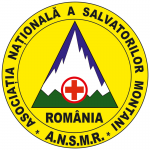 The mountain rescue activity in Romania has started more than a hundred years ago, but the first national legislative regulation in this field was issued in 1969. Today, the mountain rescue activity in our country enjoys a very good legislative framework, that allowed the development of some very strong mountain rescue structures in the 24 counties with mountain area of Romania. Organized as a public service and funded by local and county administrative structures, the mountain rescue service is formed by mountain rescuers, employees, as well as volunteers, and covers absolutely every activity related to prevention and rescue in the mountain areas, throughout the year. In the ski areas, as well as in the areas where mountain sports are intensively practiced, on the mountain routes or inside the caves and speleological areas, based in more than 140 stations and rescuing posts, the 700 Romanian mountain rescuers are always ready for action. In Romania, a mountain rescuer is a legally recognized profession, under the COD COR no. 541904 – employees in the public service.
The mountain rescue activity in Romania has started more than a hundred years ago, but the first national legislative regulation in this field was issued in 1969. Today, the mountain rescue activity in our country enjoys a very good legislative framework, that allowed the development of some very strong mountain rescue structures in the 24 counties with mountain area of Romania. Organized as a public service and funded by local and county administrative structures, the mountain rescue service is formed by mountain rescuers, employees, as well as volunteers, and covers absolutely every activity related to prevention and rescue in the mountain areas, throughout the year. In the ski areas, as well as in the areas where mountain sports are intensively practiced, on the mountain routes or inside the caves and speleological areas, based in more than 140 stations and rescuing posts, the 700 Romanian mountain rescuers are always ready for action. In Romania, a mountain rescuer is a legally recognized profession, under the COD COR no. 541904 – employees in the public service.
The training of the future mountain rescuers and the periodic up-date of the certified ones, including the medical and care training, takes 2 years in local training centers, then it is completed with another 360 hours, split in seasonal courses – two in the winter and two in the summer, held separately for beginners and for advanced level, within the National Training Center.
The mountain rescuers, volunteers or employees, must pass an exam every three years in order to get the renewal of the right to practice this profession. The official color of the equipment of a mountain rescuer is red, or red and black. At national level, the mountain rescuers are reunited in the National Mountain Rescue Association in Romania, A.N.S.M.R., a professional association recognized by the Romanian State and denominated as « public service association », designated to issue technical standards for training and for mountain rescue activities. The mountain rescue structures in Romania are officially recognized as « emergency structures » and are included in the National System for Emergency Situations.
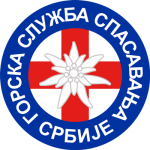 Serbia. Mountain Rescue Service of Serbia Mountain Rescue Service of Serbia (MRS Serbia) is а voluntary and non-for-profit organization driven primarily by the cause ofhelping and rescuing endangered or injured people in rough alpine terrains and urban areas. The primary task of MRS is to save human life and to help those in jeopardy. Mountain Rescue Service of Serbia was founded in 1952 by experienced climbers and alpinists from the Mountaineering Association of Serbia. Today, the MRS Serbia includes almost 250 licensed active rescuers, many of whom are experienced mountaineers, climbers, cavers, divers, skiers and paragliders.
Serbia. Mountain Rescue Service of Serbia Mountain Rescue Service of Serbia (MRS Serbia) is а voluntary and non-for-profit organization driven primarily by the cause ofhelping and rescuing endangered or injured people in rough alpine terrains and urban areas. The primary task of MRS is to save human life and to help those in jeopardy. Mountain Rescue Service of Serbia was founded in 1952 by experienced climbers and alpinists from the Mountaineering Association of Serbia. Today, the MRS Serbia includes almost 250 licensed active rescuers, many of whom are experienced mountaineers, climbers, cavers, divers, skiers and paragliders.
Mountain Rescue Service of Serbia is equipped, skilled and trained for performing all kind of search and rescue operations in the domains of: Rescue in urban areas, Rescue in mountain conditions, search and rescue in ski resorts, vertical rock rescue, cave rescue.
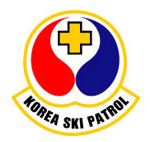 South Korea. Ski Resort Business Association of Korea (SBAK) Ski Resort Business of Korea (SBAK) was established in 1990 and currently has all 15 ski resorts operating in South Korea as it’s members. SBAK is responsible for all kinds of activities to ensure the safety and revitilization of the Shouth Korean ski resorts, especially the annual certification of ski patrollers through education and testing to handle patrol and emergency rescue operations at all ski resorts in the country.
South Korea. Ski Resort Business Association of Korea (SBAK) Ski Resort Business of Korea (SBAK) was established in 1990 and currently has all 15 ski resorts operating in South Korea as it’s members. SBAK is responsible for all kinds of activities to ensure the safety and revitilization of the Shouth Korean ski resorts, especially the annual certification of ski patrollers through education and testing to handle patrol and emergency rescue operations at all ski resorts in the country.
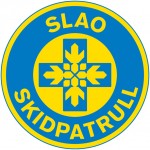 Sweden. Swedish Lift Area’s Organization (SLAO) has from the beginning in 1978 arranged a three day program of specialist education in First Aid in the Skis lope for all lift-employees. This course includes training in the alignment of angulated fractures and other difficult ski injuries.
Sweden. Swedish Lift Area’s Organization (SLAO) has from the beginning in 1978 arranged a three day program of specialist education in First Aid in the Skis lope for all lift-employees. This course includes training in the alignment of angulated fractures and other difficult ski injuries.
Since 1980 SLAO has also arranged a longer course of two weeks duration to become a Ski Patroller. Up to now we have educated approximately 400 patrollers. The Ski-Patrollers are now organized, in cooperation with SLAO, into the Swedish Ski Patrollers Association.
The SLAO has also, in cooperation with medical and technical authorities, developed various rescue materials and techniques, such as splints and toboggans. Together with the Folksam Insurance Groupe, SLAO has also assigned a special insurance for alpine skiers. The benefit from it is returned to nationwide ski-safety program.
 Switzerland. The easiest way to become a ski patroller in Switzerland is by participating at one of the ski patrol courses provided by Seilbahnen Schweiz (SBS).
Switzerland. The easiest way to become a ski patroller in Switzerland is by participating at one of the ski patrol courses provided by Seilbahnen Schweiz (SBS).
There are four different courses offered, which all build upon each others.
A junior patroller start off with the A-course ,which is emphasising on first aid, snow and equipment knowledge, use of rescue toboggans, helicopter rescue, radio communication, map reading, and the Swiss regulations for snow sport operations.
The next year, one can do the B-course, an avalanche phenomena / avalanche rescue course.
The third course offered is a snowblasting course, where you become an approved handler of hand charges. Later one can extend the approved handler certificate by doing courses for other methods of snow blasting.
After minimum four seasons as a ski patroller one can do the C-course, which is required in order to become a ski patrol director.
This course involves:
- Statistics (history)
- Safe and efficient avalanche control
- Snow and avalanche research
- Avalanche rescue
- Snow blasting
- Ski patrolling in general
- Mountain and glacier rescue
- Survival test
- Economics for a ski patrol operation
- Human resource management
- Successful leadership of a ski patrol team
- Regulations and responsibilities as a ski patrol director.
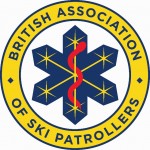
United Kingdom. The British Association of Ski Patrollers (BASP) was founded in the winter of 1987 to standardise training for Ski Patrollers who provide rescue and first aid services in British Ski areas. We have over 150 members of which over 20% are fully qualified as National Patrollers, and 42 are either Probationary or Trainee Patrollers, we also have 74 Associate members who support and are interested in the work which we do. Many of our Ski Patrollers are trained to EMT standard which includes the use of airway adjuncts and AEDs.
BASP also runs First Aid Training as the business side of the Association which in turn provides valuable work and income for Ski Patrollers out of the ski season. We have 28 trainers involved with this work, mainly on a part time basis. We train Ski Patrollers and Mountain Rescue team members up to Emergency Medical Technician standard – which are the skills necessary for this kind of work in the Scottish Mountains and the rest of the UK. Many outdoor users participate in the First Aid training we provide. The BASP First Aid Training courses and certificates have now become the Gold Standard of Outdoor First Aid qualifications and are recognised by all the National Sporting Bodies in the UK and are becoming more Internationally known.
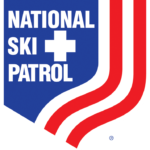 United States of America. The National Ski Patrol (NSP) is the primary training and education organization within the United States and some portions of Canada, Europe and Asia. The organization was founded in 1938.
United States of America. The National Ski Patrol (NSP) is the primary training and education organization within the United States and some portions of Canada, Europe and Asia. The organization was founded in 1938.
One of the few federally chartered not-for-profit organizations in the U.S., the NSP is the world’s largest winter rescue organization. The NSP’s 31,000 paid and volunteer members serve on over 600 patrols. The NSP is composed of 10 geographic divisions plus a single division for all pro patrollers.
NSP provides an extensive education system and has grown into an authority on outdoor emergency care. Trainings include Outdoor Emergency Care courses and refreshers, toboggan (Outdoor Emergency Transportation), Mountain Travel & Rescue, Avalanche, Nordic/Backcountry, Instructor Development and Outdoor First Care.
NSP was a founding member of FIPS. The Executive Director sits on the board to represent the U.S.
